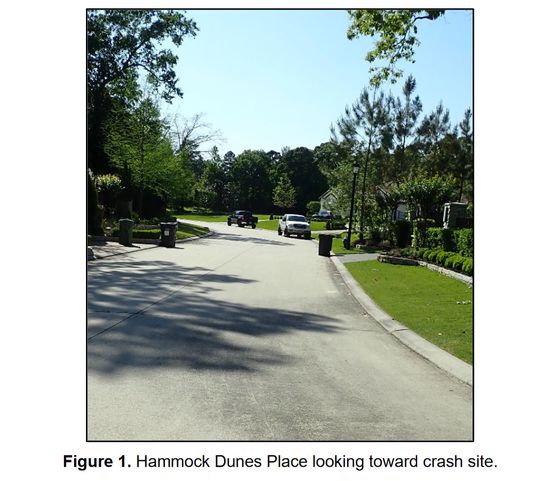As a result of the investigation that the autopilot function could not be used for the Tesla car that caused the fatal accident, is the information that 'the driver's seat was unmanned' incorrect?

On April 17, 2021, a 2019 Tesla Model S crashed into a tree and then burned, killing two people.
HWY21FH007-preliminary-report.pdf
(PDF file) https://www.ntsb.gov/investigations/AccidentReports/Reports/HWY21FH007-preliminary-report.pdf
NTSB releases preliminary report on fatal Tesla crash in Spring, Texas
https://www.cnbc.com/2021/05/10/ntsb-releases-preliminary-report-on-fatal-tesla-crash-in-spring-texas.html
NTSB: Tesla Model S in Crash Couldn't Have Been Using Autopilot
https://www.caranddriver.com/news/a36387950/ntsb-investigation-tesla-model-s-autopilot/
The Tesla Model S crash in Texas, USA, on April 17, 2021, killed two people, a 59-year-old man who owns the car and a 69-year-old man who was on board. Not only was the car known to have burned violently in the accident, but local police Mark Harman said, 'I'm confident that there was no one in the driver's seat, given the location of the body.' It was. It was unclear whether the Model S had the autopilot feature enabled at the time of the accident, but reports that the driver's seat was unmanned suggest that the autopilot was enabled while driving.
Tesla Model S burns out in a collision, killing two people, unmanned driver's seat-GIGAZINE

However, Tesla's vice president of automotive engineering, Lars Moraby, denied police investigations, saying that examining the steering wheel of the accident car concluded that someone was sitting in the driver's seat. Tesla CEO Elon Musk also mentioned the accident, saying, 'According to the recovered data logs, the car in question has no autopilot enabled and also has the lanes needed to turn on the autopilot. It was a road that didn't exist. '
Tesla claims 'there was a person in the driver's seat' regarding the fatal accident of Tesla Model S that the driver's seat was unmanned --GIGAZINE

And on May 10, local time, NTSB and the National Highway Traffic Safety Administration (NHTSA), which have been investigating the accident, released a preliminary report of the investigation results. According to the report, the accident site was about 550 feet away from the home of the 59-year-old man who owns the Model S. The vehicle ran away on a curve, overcame a curb, crossed a drainage channel and a manhole, and collided with a tree. It is also stated that the accident site was a one-lane road on each side with no lanes drawn, and the speed limit was 30 mph (about 48 km).

The fire after the collision was caused by the damage of the high-voltage lithium-ion battery case, and it seems that the in-vehicle storage etc. was burnt down together with the vehicle, but data such as the speed of the car, the state of the seat belt, the acceleration, the deployment of the airbag It is said that the in-vehicle restraint control module that saves the data was safe. The module was handed over to the NTSB laboratory for investigation into the situation at the time of the accident.
According to the report, a surveillance camera image installed at the 59-year-old man's home recorded a 59-year-old man sitting in the driver's seat of Model S and a 69-year-old man sitting in the passenger seat. .. This point denies the police's claim that the driver's seat was unmanned immediately after the accident.
It has also been pointed out that although the Model S was certainly equipped with an autopilot function, it was not possible to use the function at the accident site. To enable Tesla's autopilot function, 'Traffic Aware Cruise Control' that detects the distance to the preceding vehicle and controls the running speed of the vehicle and 'Traffic Aware Cruise Control' that detects the lane and is appropriate There are two types of 'Autosteer' that need to be operated.
However, when the NTSB tested it with a Tesla car at the scene of the accident, cruise control worked, but the autopilot did not work because there were no recognizable lanes on the road at the scene. In other words, the autopilot function could not be enabled at the accident site.

by Automobile Italia
The NTSB and NHTSA investigations will continue in collaboration with Tesla to investigate issues such as seatbelt use, collision conditions, and occupant evacuation.
Related Posts:
in Vehicle, Posted by log1h_ik





